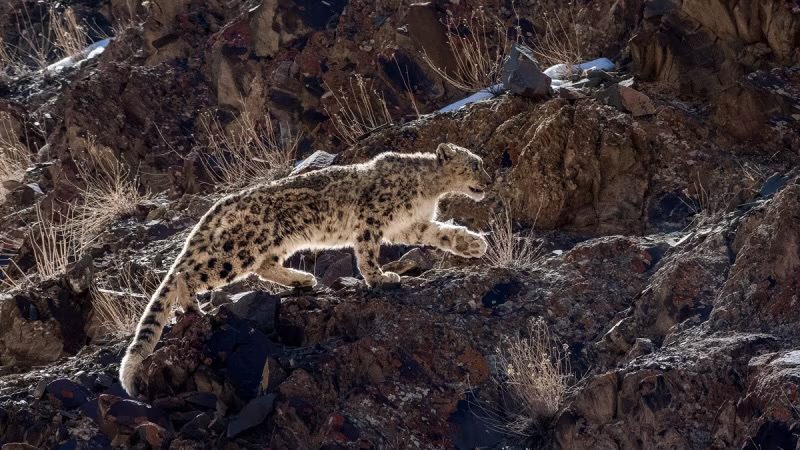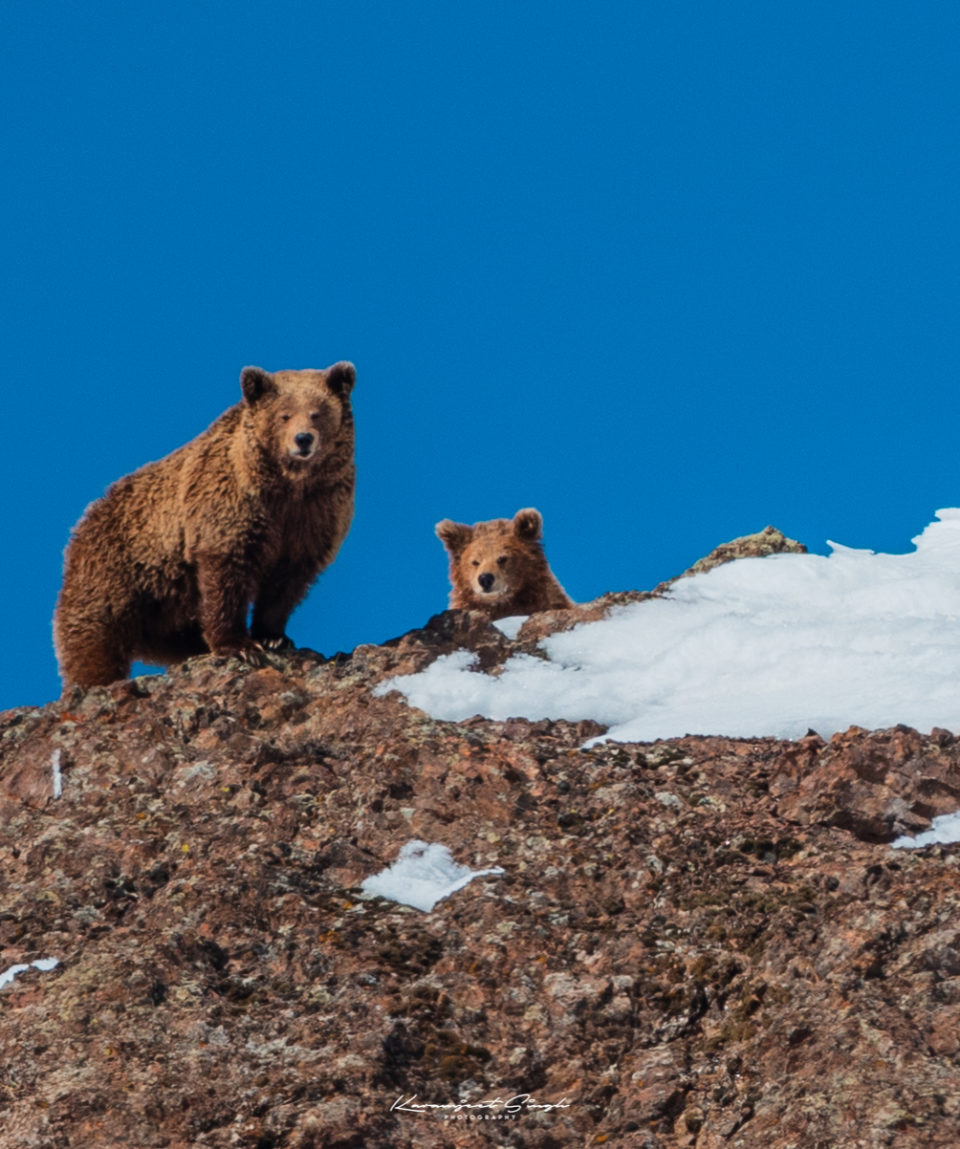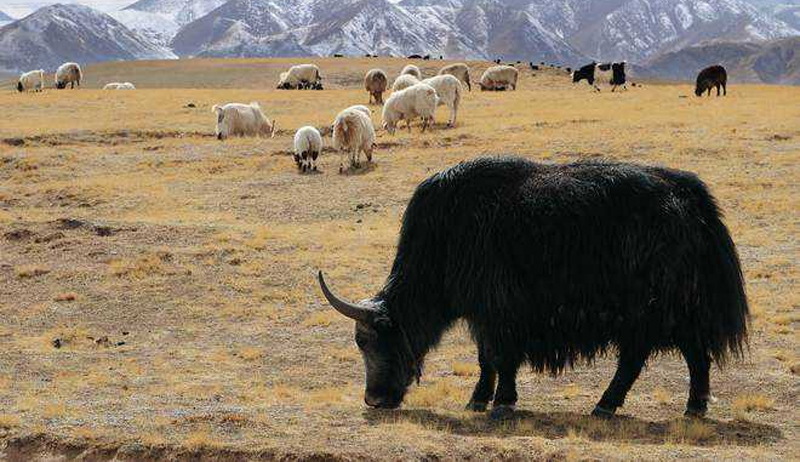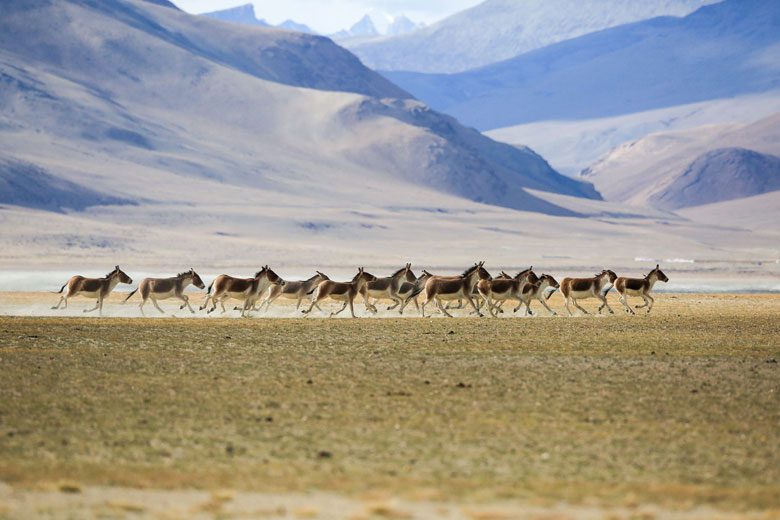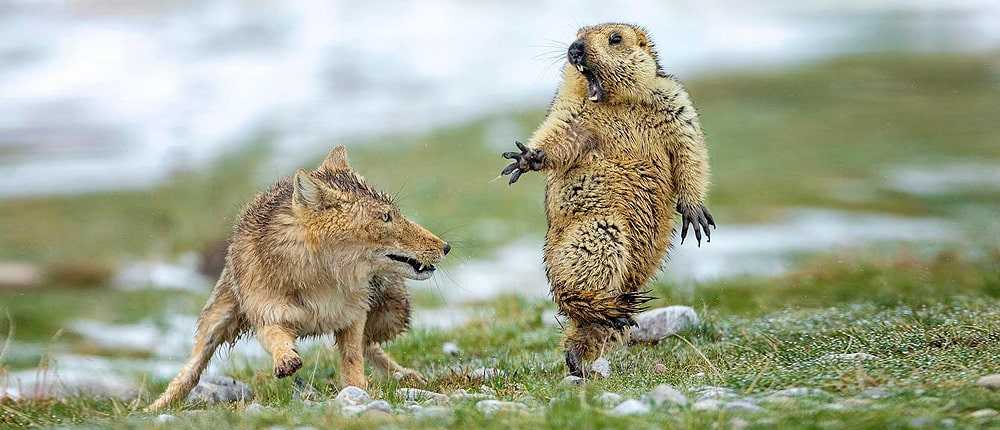Wildlife Sanctuaries in Ladakh: A Guide to Exploring the High-Altitude Wilderness
Ladakh is a region like no other. Known for its high-altitude landscapes, serene monasteries, and thrilling trekking routes, it’s also home to some of the most elusive and endangered species of wildlife. In the cold desert ecosystem of Ladakh, a thriving population of animals and birds exists, uniquely adapted to the harsh environment. For those who love nature, Ladakh’s wildlife sanctuaries offer the opportunity to see rare species in their natural habitat, including the famous snow leopard. In this guide, we’ll explore the top wildlife sanctuaries in Ladakh, the best times to visit, and how you can experience Ladakh’s incredible wildlife firsthand.

Top Wildlife Sanctuaries in Ladakh for Snow Leopard Sightings
Ladakh is perhaps best known for its snow leopard population. These elusive big cats are one of the most sought-after sightings for wildlife enthusiasts. Among Ladakh’s wildlife sanctuaries, Hemis National Park is the prime destination for anyone looking to catch a glimpse of these rare predators. It’s no surprise that Hemis National Park is often referred to as the Snow Leopard Capital of the World.
Hemis National Park: The Best Place to See Snow Leopards in Ladakh
Nestled in the high-altitude region of eastern Ladakh, Hemis National Park is the largest national park in India and spans over 4,400 square kilometers. This park is a haven for wildlife, with animals like the blue sheep, Tibetan antelope, and the Himalayan brown bear sharing the landscape with the snow leopard. Visitors can take advantage of the various trekking routes within the park to increase their chances of spotting these elusive creatures.

Wildlife Found in Hemis National Park
| Species |
Habitat Type |
Conservation Status |
| Snow Leopard |
Rocky, high-altitude terrain |
Endangered |
| Blue Sheep (Bharal) |
Alpine meadows |
Least Concern |
| Tibetan Antelope |
Cold desert plains |
Near Threatened |
| Himalayan Brown Bear |
Forests, alpine regions |
Vulnerable |
Apart from snow leopards, Hemis National Park is home to over 200 species of birds, making it an ideal destination for birdwatching enthusiasts. Species like the golden eagle, lammergeier, and Himalayan griffon vulture can be spotted soaring high above the mountains.
Other Wildlife Sanctuaries and Protected Areas in Ladakh
Ladakh has more to offer than just Hemis. There are several other protected areas where visitors can explore the region’s incredible biodiversity.
Exploring the Wildlife in Changthang Wildlife Sanctuary
The Changthang Wildlife Sanctuary, situated near the Tso Moriri Lake, is another hotspot for wildlife viewing in Ladakh. The Kiang (Tibetan Wild Ass) roams freely across the cold desert, while the wetlands in this region are a haven for migratory birds like the black-necked crane and the bar-headed goose. The rugged landscape of Changthang is not only stunning but also home to species that thrive in high-altitude ecosystems.
List of Key Species Found in Changthang Wildlife Sanctuary
- Kiang (Tibetan Wild Ass)
- Black-necked Crane
- Bar-headed Goose
- Tibetan Gazelle
- Himalayan Marmot
Endangered and Rare Species Found in Ladakh’s Wildlife Sanctuaries
Ladakh’s sanctuaries are home to several endangered species, many of which can only be found in this part of the world. Snow leopards, Himalayan wolves, and Tibetan antelopes are all rare, but conservation efforts have been put in place to protect their populations. One of the region’s success stories is the Himalayan marmot, which has seen a resurgence in population over the years.
Yak and Wild Ass Sightings in Ladakh’s Nature Reserves
One of the more surprising sightings in Ladakh’s wildlife sanctuaries is the wild yak. These massive bovines roam the cold, arid landscapes, often spotted in areas like Hemis and Changthang. Similarly, the Kiang, or Tibetan Wild Ass, is another rare sight. Visitors to Changthang have a high chance of spotting this resilient animal, known for its remarkable ability to survive in the cold desert ecosystem.

Best Time to Visit Ladakh for Wildlife Safaris and Birdwatching
If you’re planning to explore Ladakh’s wildlife, the best time to visit is between May and September, when the weather is warmer and the animals are more active. During this period, the region’s rare and endangered species are easier to spot. Birdwatching is especially rewarding, as the wetlands in areas like Tso Moriri and Tso Kar attract a variety of migratory birds.
Birdwatching Hotspots in Ladakh’s Wildlife Sanctuaries
Ladakh is home to several birdwatching hotspots. Key locations include the Changthang Wetlands, the Pangong Lake area, and the Tso Kar region. Bird species like the black-necked crane, golden eagle, and the bar-headed goose can be seen during the summer months.
Best Birdwatching Sites in Ladakh
| Birdwatching Site |
Key Species |
Best Time to Visit |
| Tso Moriri Wetlands |
Black-necked Crane, Bar-headed Goose |
May to September |
| Pangong Lake |
Golden Eagle, Lammergeier |
June to August |
| Tso Kar |
Tibetan Sandgrouse, Brown-headed Gull |
July to September |

Eco-Tourism and Conservation Efforts in Ladakh’s Wildlife Sanctuaries
In recent years, eco-tourism has become a major focus in Ladakh, with local communities and conservationists working together to preserve the delicate ecosystems and rare species found in the region. Ladakh’s wildlife sanctuaries have implemented a variety of sustainable tourism practices, including low-impact trekking and wildlife safaris.
How Ladakh’s Wildlife Sanctuaries Promote Sustainable Tourism
To minimize environmental impact, Ladakh’s wildlife sanctuaries encourage visitors to follow eco-friendly practices. These include respecting the natural habitats of animals, minimizing waste, and staying on designated trekking paths. Local guides, many of whom are trained in conservation, lead visitors through the parks to ensure minimal disturbance to the wildlife.
How to Plan Your Visit to Ladakh’s Wildlife Sanctuaries
Planning a trip to Ladakh’s wildlife sanctuaries requires some preparation due to the region’s high altitude and remote locations. Here are some essential tips for a successful wildlife tour:
- Altitude Preparation: Ladakh’s wildlife reserves, such as Hemis National Park and Changthang, are located at elevations over 3,000 meters. Acclimatization is crucial.
- Wildlife Gear: Bring binoculars for birdwatching, cameras with zoom lenses for wildlife photography, and layers of clothing for varying weather conditions.
- Local Guides: Hiring a local guide with knowledge of wildlife tracking can increase your chances of spotting elusive animals like the snow leopard.

Frequently Asked Questions about Ladakh’s Wildlife Sanctuaries
What is the best wildlife sanctuary in Ladakh?
The best wildlife sanctuary for spotting rare animals, particularly the snow leopard, is Hemis National Park.
What animals can be found in Ladakh?
Ladakh is home to a wide variety of animals, including the snow leopard, Himalayan brown bear, blue sheep, and the Tibetan antelope.
Can you see snow leopards in Ladakh?
Yes, Hemis National Park is known for having one of the largest populations of snow leopards in the world.
Is Ladakh good for birdwatching?
Absolutely. The wetlands and high-altitude regions of Ladakh are prime locations for birdwatching, with species like the black-necked crane and golden eagle commonly spotted.
wildlife sanctuaries in Ladakh
wildlife sanctuaries in Ladakh | The journey through Ladakh mirrors the very essence of unraveling unknown horizons, as its dramatic landscapes and unique cultural identity awaken the deepest sense of wonder and exploration. wildlife sanctuaries in Ladakhdelves into this realm where inner peace intertwines with the wild, untouched beauty of Ladakh. From the snow-capped peaks to the serene monasteries, every step in Ladakh is a step toward self-discovery. The mountains, ancient paths, and unspoken mysteries stretch before travelers, offering a meditative experience where each encounter feels both effortless and transformative. Whether it’s trekking across remote valleys or sitting quietly beside a sacred lake, Ladakh invites those who seek a deeper connection to the natural and spiritual world.

The History of Ladakh’s wildlife sanctuaries in Ladakh
The monasteries of Ladakh stand as living monuments to the region’s profound spiritual heritage. With origins dating back over a thousand years, these ancient structures are both places of worship and repositories of art, culture, and wisdom. Hemis Monastery, one of the largest in Ladakh, is renowned for its annual festival, featuring colorful mask dances performed by monks. The history of these monasteries reflects Ladakh’s role as a crossroads between India, Tibet, and Central Asia, where religious and cultural influences have intertwined over the centuries.
The Tibetan Buddhist influence is especially evident in the architecture and daily life of the monks. Prayer wheels, intricate murals, and the soft hum of chants fill the air as visitors explore the monastery grounds. Each monastery, from the remote Lamayuru to the awe-inspiring Thiksey, offers a window into the spiritual heart of Ladakh. These centers of meditation, learning, and community life continue to thrive, preserving traditions that have shaped Ladakh for generations.
Why Visit Ladakh for wildlife sanctuaries in Ladakh?
Ladakh is a destination that transcends mere travel. It offers a journey that touches both the outer and inner landscapes, making it a perfect setting for those who seek to unravel their own unknown horizons. The region’s breathtaking scenery—from towering mountain ranges to hidden valleys—provides not just an escape but a space for contemplation and growth. Ladakh’s culture, deeply rooted in Buddhist practices, invites visitors to reflect on their own lives and the world around them.
Ladakh’s people, known for their warmth and hospitality, add to the richness of the experience. Villages like Sumda Chun and the legendary Nubra Valley introduce travelers to a way of life that is intricately connected to nature and spirituality. Staying in local homestays allows for immersive experiences where one can learn about traditional Ladakhi customs, share meals made from local produce, and participate in community rituals.

Beyond its natural beauty, Ladakh offers a unique opportunity to explore oneself. The vastness of the region’s plateaus and the clarity of its skies seem to mirror the vastness of the human spirit. Whether it’s standing atop a mountain pass at 18,000 feet or meditating in a centuries-old monastery, Ladakh helps unravel the unknown horizons within each traveler.
Finding the Best wildlife sanctuaries in Ladakh in Ladakh
Finding the best places in Ladakh to experience “wildlife sanctuaries in Ladakh” involves venturing off the beaten path. Ladakh’s lesser-known treks, such as those leading to secluded monasteries or high-altitude lakes, offer unparalleled opportunities for solitude and reflection. The Markha Valley trek, for instance, takes travelers through verdant valleys, ancient villages, and high-altitude passes, allowing for both physical and spiritual exploration.
Ladakh’s iconic lakes, including Pangong Tso and Tso Moriri, are ideal spots for quiet contemplation. Their still waters reflect the sky, creating a mesmerizing landscape that feels timeless and infinite. Sitting beside these lakes, especially at dawn or dusk, brings an overwhelming sense of peace and connection with nature.

For those interested in Ladakh’s spiritual heritage, exploring monasteries such as Alchi, Phyang, or Diskit can be a transformative experience. These sites are not just places of worship but also centers of art, philosophy, and wisdom. Visiting these monasteries, with their ancient murals and intricate statues, offers insight into Ladakh’s rich cultural tapestry.
Ladakh’s Atmosphere and wildlife sanctuaries in Ladakh
Ladakh’s atmosphere is unlike any other place on Earth. The stark contrasts between the rugged mountains and the serene, tranquil monasteries create an environment that feels both raw and sacred. The traditional decor in Ladakhi homes and religious sites reflects this balance, with mud-brick houses adorned with prayer flags and colorful thangkas (Buddhist paintings) that add warmth and spiritual meaning to the space.

The interiors of Ladakhi homes, often simple and functional, are filled with symbols of devotion. Small shrines dedicated to Buddhist deities are common, and the air is often fragrant with incense. The use of earthy materials, like stone and wood, along with brightly colored textiles, creates an inviting and peaceful space, perfect for relaxation and reflection.
Traditional Ladakhi Cuisine
Traditional Ladakhi cuisine is an integral part of the region’s identity, offering a unique blend of flavors that reflect its harsh climate and remote location. Hearty, warming dishes such as thukpa (noodle soup) and momos (dumplings) provide the sustenance needed to endure Ladakh’s cold temperatures. Skyu, a thick stew made with root vegetables and barley, is another staple of the Ladakhi diet, designed to nourish both body and spirit.

Drinks like butter tea, made with yak butter and salt, are a must-try for anyone visiting Ladakh. This rich, savory drink is not only warming but also hydrating, making it essential for those venturing into the high-altitude regions of Ladakh. Chang, a local barley beer, is often enjoyed during festivals and community gatherings, adding a sense of joy and camaraderie to any occasion.
Live Cultural wildlife sanctuaries in Ladakh in Ladakh
Ladakh is home to a vibrant cultural scene, with festivals and live performances held throughout the year. The Hemis Festival, which celebrates the birth of Guru Padmasambhava, is one of the largest and most famous events in the region. Monks dressed in elaborate costumes perform cham dances, which depict the triumph of good over evil. The energy of the festival, with its bright colors, rhythmic music, and elaborate rituals, draws visitors from around the world.
Other local festivals, such as the Losar (New Year) and Ladakh Festival, provide visitors with the chance to witness traditional dance, music, and crafts that have been passed down through generations. These events are more than just entertainment; they are a celebration of Ladakh’s rich cultural heritage and its deep connection to the spiritual world.
Trekking and Outdoor Activities wildlife sanctuaries in Ladakh
Ladakh is a trekker’s paradise, offering some of the most stunning and challenging routes in the world. From the famous wildlife sanctuaries in Ladakh, which follows the frozen Zanskar River, to lesser-known routes like the Sham Valley or Nubra Valley treks, Ladakh’s landscape offers endless possibilities for adventure and discovery. The high-altitude passes, such as Khardung La and Chang La, offer breathtaking views of snow-capped peaks and sprawling valleys.

Wildlife enthusiasts will also find wildlife sanctuaries in Ladakh to be a haven for rare species such as the snow leopard, Himalayan blue sheep, and the Tibetan wild ass. Winter expeditions to spot the elusive snow leopard in the Hemis National Park are gaining popularity among wildlife photographers and conservationists alike.
The Importance of Preserving Ladakh’s wildlife sanctuaries in Ladakh
Ladakh’s rich cultural and environmental wildlife sanctuaries in Ladakh is under increasing threat from climate change and mass tourism. Preserving this unique region requires careful attention to sustainable tourism practices. Choosing eco-friendly accommodations, supporting local businesses, and participating in community-led conservation efforts are just a few ways that visitors can contribute to the preservation of Ladakh’s natural and cultural heritage.
Ladakh’s people have a long history of living in harmony with their environment, practicing sustainable agriculture, and maintaining a deep spiritual connection to the land. Visitors are encouraged to follow the same principles, leaving no trace and respecting the fragile ecosystems that make Ladakh so special.
Etiquette and Tips for Visiting wildlife sanctuaries in Ladakh
Before visiting Ladakh, it’s essential to understand and respect the region’s customs and traditions. As a deeply spiritual place, Ladakh requires visitors to dress modestly, especially when visiting monasteries or attending religious ceremonies. Always ask for permission before taking photographs inside monasteries or of local people.
Medical wildlife sanctuaries in Ladakh
Spa trail wildlife sanctuaries in Ladakh
Life on The Planet LADAKH

When wildlife sanctuaries in Ladakh, remember to stay on designated paths to avoid damaging fragile ecosystems. Tipping is appreciated but not expected in most settings, and it’s important to carry cash, as many remote areas do not accept credit cards. Lastly, be mindful of altitude sickness and take the necessary precautions when traveling to higher elevations.
Conclusion: Enjoying wildlife sanctuaries in Ladakh in Ladakh
Ladakh is a place where the physical and spiritual worlds converge, offering travelers a journey unlike any other. Whether you’re trekking across high-altitude deserts, exploring ancient monasteries, or simply sitting in quiet reflection by a mountain lake, Ladakh invites you to unravel your own unknown horizons. By respecting the region’s traditions and practicing sustainable tourism, you help ensure that Ladakh’s beauty and cultural richness will be preserved for future generations to explore and enjoy.
